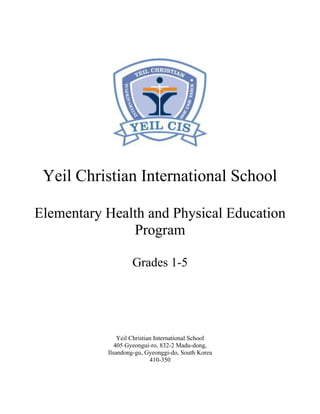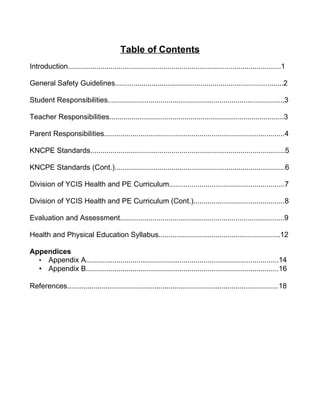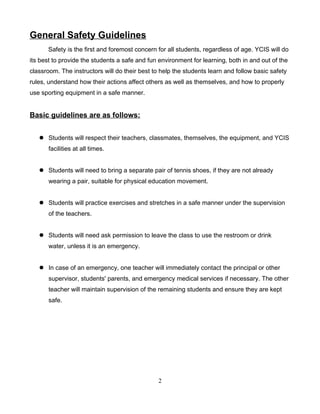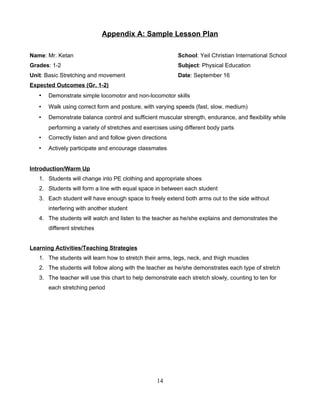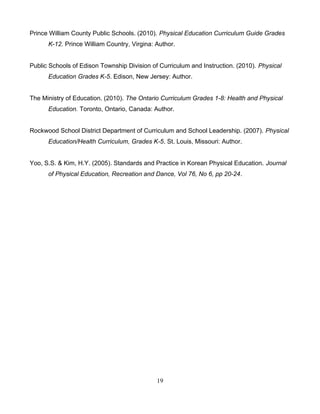This document outlines the health and physical education curriculum for grades 1-5 at Yeil Christian International School in South Korea. It includes general safety guidelines, responsibilities of students, teachers, and parents. It outlines the standards and content from the Korean National Curriculum for Physical Education that the school adheres to. The curriculum is divided into life skills and health/fitness skills and includes benchmarks for different grade levels. Student evaluation and assessment is based on participation, effort, behavior, preparedness, and tests. A yearly schedule provides an overview of the units and activities covered each semester.
